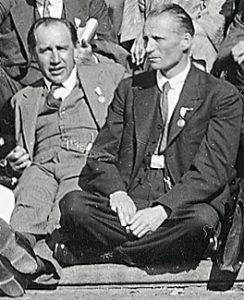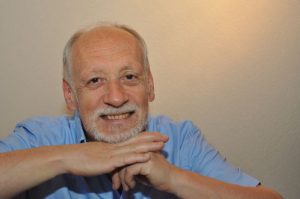“Nor can there be an intermediate term between contradictories, but one of them must necessarily be affirmed or denied, whichever it is, of the same thing.” (Aristotle, Metaphysics, 1011b23-24)

The (vast) majority of the mathematical community works under a common logical framework: the same one we have been taught and the same one we teach our students. That logical framework is the language of formalism, crystallised essentially after the work of David Hilbert, although its trail can be followed further back in time (Peano, Cantor, Frege, Russell-Whitehead,…) and also further on (Gödel, Turing, Zermelo-Fraenkel,…).
However, barely a century ago the matter was not so clear, and the debate on the logical foundations of mathematics was a hot issue between two notably different points of view: the formalist, led by Hilbert, and the constructivist, which counted among its ranks such illustrious names as Poincaré or Weyl, Hilbert’s pupil. This is a hypersimplification of a much more multifaceted reality; there were de facto many more positions and, in fact, almost all the great minds involved in the debate had their personal views, which, to top it off, in many cases were not stable in time either (Weyl is a good example of this).
Within the constructivist theory, a young Dutch mathematician called L.E.J. Brouwer, outlined and proposed a paradigm that was directly opposed to formalism, which he called intuitionism. Brouwer’s intuitionism directly confronts formalism (and, therefore, the mathematics we work with today) in some essential points, such as the use of the Axiom of Choice or its equivalent, Zorn’s Lemma. More radically, intuitionism denies the Law of excluded middle or tertium non datur –if you like to use Latin to make what you say sound more sophisticated– which goes back to Aristotle (see quote at the beginning of the article), which disqualifies, for example, any demonstration by reductio ad absurdum.
Partly because of its radical nature, and partly because of what was perceived (by Weyl, among others) as an excess of restrictions that made real progress in the discipline impossible, intuitionism was relegated in conventional mathematics in favour of formalism, and its study and development was confined to a few specialists in the logical-philosophical foundations of mathematics. And with this background, it turns out that on Three Kings Day 2020, the Magi from the East bring us this article published in Nature Physics as a gift: N. Gisin, Mathematical languages shape our understanding of time in physics. Nat. Phys. (2020) doi:10.1038/s41567-019-0748-5
 The author, Nicolas Gisin, is a professor at the University of Geneva and an international award-winning expert in quantum mechanics and its applications to information. Like many others working in the field, Professor Gisin seems to have found frustrating the inability to understand quantum phenomenology and the concept of time with formalist mathematical language, but beyond the usual tools (such as understanding objects as functions to explain wave-corpuscle duality or introducing probabilistic notions to model uncertainty, see the post The great veil is lifted: what if everything is nothing but waves? on this blog), he has aimed higher.
The author, Nicolas Gisin, is a professor at the University of Geneva and an international award-winning expert in quantum mechanics and its applications to information. Like many others working in the field, Professor Gisin seems to have found frustrating the inability to understand quantum phenomenology and the concept of time with formalist mathematical language, but beyond the usual tools (such as understanding objects as functions to explain wave-corpuscle duality or introducing probabilistic notions to model uncertainty, see the post The great veil is lifted: what if everything is nothing but waves? on this blog), he has aimed higher.
Professor Gisin suggests in the article that intuitionist language is richer and closer to physical reality than formalist language and that some of the problems facing physics today stem from the fact that the mathematics used to describe phenomena (formalist mathematics, of course) is inadequate and is preventing progress and a correct understanding of reality.
“I believe that the notion of a deterministic and timeless world does not arise from the huge empirical success of physics, but from considering Platonistic mathematics as the only language for physics. Physics can be as successful if built on intuitionistic mathematics, even if this breaks its marriage to determinism. Contrary to usual expectations, I bet that the next physical theory will not be even more abstract than quantum field theory, but might well be closer to human experience.” (N. Gisin, loc.cit.)
The article is written in language understandable to anyone with some basic scientific training and may, in a sense, be overly simplistic, considering that what it proposes is certainly revolutionary in nature. In fact, the examples he gives, such as the chaotic nature of dynamical systems that model physical realities, sometimes seem more focused on “selling the idea” than on explaining it faithfully per se. But we certainly recommend reading it to anyone interested in the fundamentals of mathematics or in the applications of mathematics to physics.
Whether we are witnessing a first impulse for the divorce between formalist mathematics and Physics, is something that will be seen in time (understand this concept as you like). And, who knows, maybe the outcome is already determined by the initial conditions. Or maybe not.

Leave a Reply